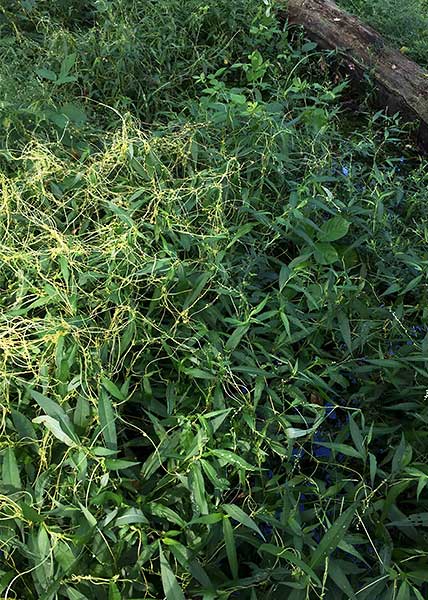
Date: August 2016. Location: Ciha fen(map)
| Classification Hierarchy | |
| Kingdom | Plantae |
| Subkingdom | Tracheophyta |
| Superdivision | Spermatophyta |
| Division | Magnoliophyta |
| Class | Magnoliopsida |
| Subclass | Asteridae |
| Order | Solanales |
| Family | Convolvulaceae |
| Genus | Cuscuta |
| Species | Cuscuta polygonorum |

Date: August 2016. Location: Ciha fen(map)
USDA Plant Profile Flora of N. America
Scientific Name: Cuscuta polygonorum
Common Name: smartweed dodder
Origin: Native
Notes: Cuscuta species may have small amounts of chlorophyll in some of their tissues (usually embryonic cells) but it is a holoparasite (obligate parasite) and is not believed to be capable of photosynthesis. Eight species of Cuscuta have been recorded in Iowa. Seven of the species are native to Iowa and all eight species are considered as infrequent or rare by Eilers and Roosa. Cuscuta polygonorum can be distinguished from the other Iowa Cuscuta species by its very short (less than 1 mm) styles and its penchant for members of the Polygonaceae (smartweed or knotweed) family to serve as its host (see discussion below photos section).
Additional references: 1, 2, 3, 4, 5, 6, 7, 8, 9, 10, 11, 12.
Flowers: July-Sept.; Usually in crowded clusters, corolla lobes are pellucid or white, erect or ascending. The majority of flowers have two styles, four acutely pointed corolla lobes, and four anthers; however, a few may have three or five lobes and anthers; fruit (capsules) are globular with two short styles (less than 1 mm long) and when fully fertilized, produce 4 seeds.
Leaves: alternate, reduced to small (less than 4mm long) lanceolate, sessile scales
Glossaries of botanical terms: 1, 2, 3, 4, 5, 6, 7, 8, 9, 10, 11.
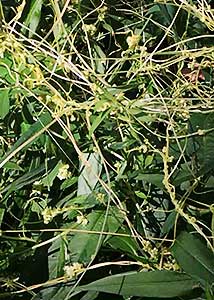
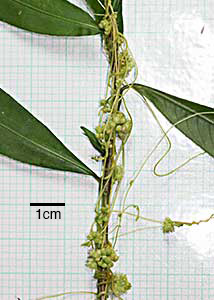
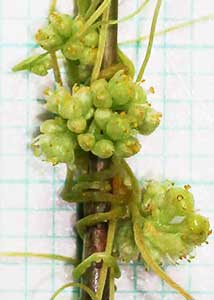
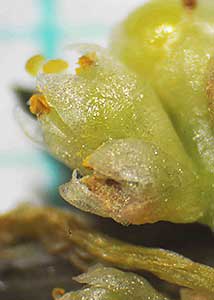
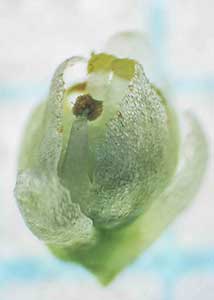
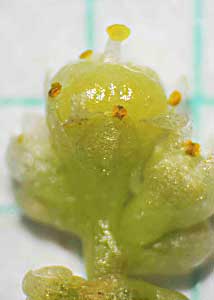
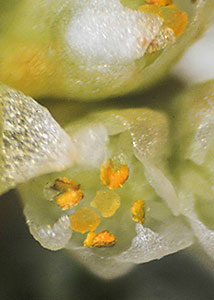
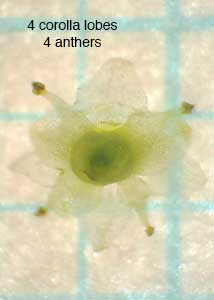
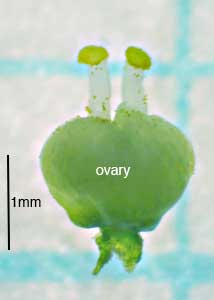
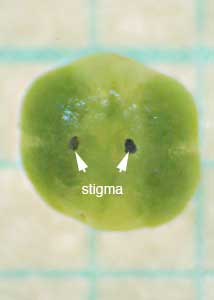
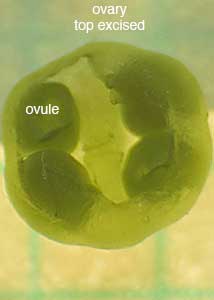
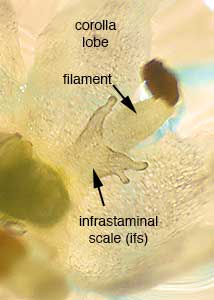
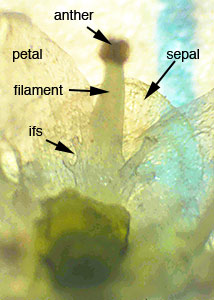
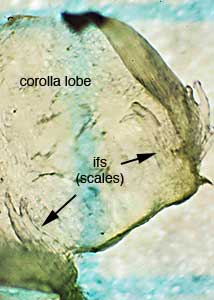
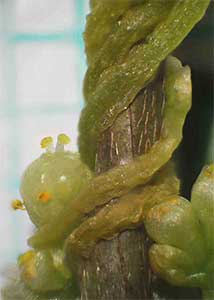
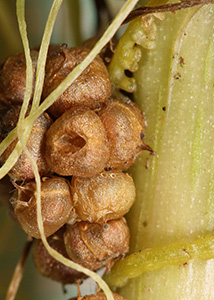
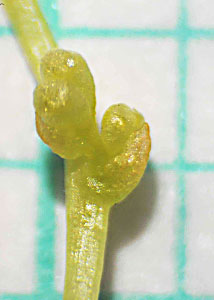
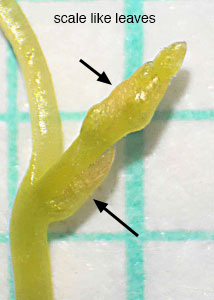
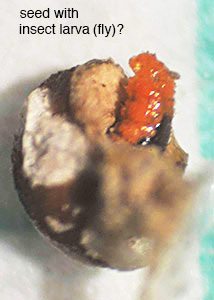
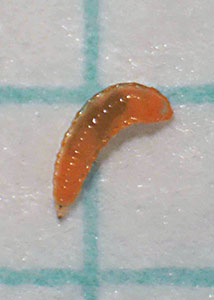
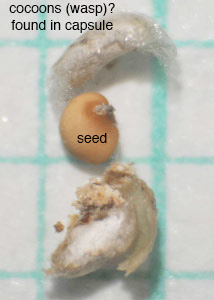
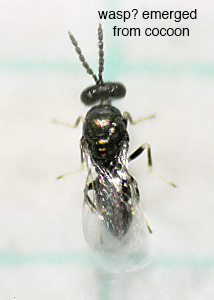
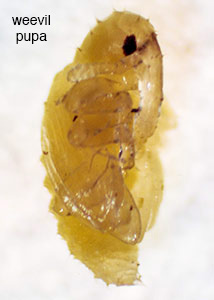
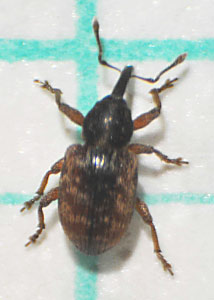

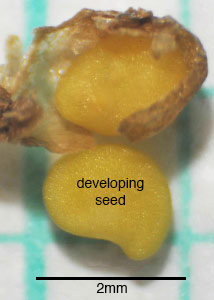
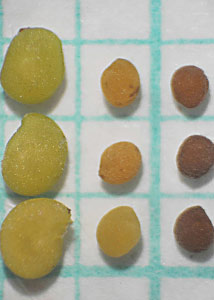
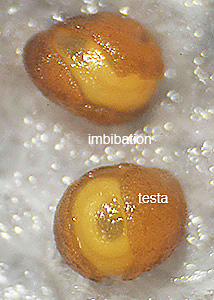

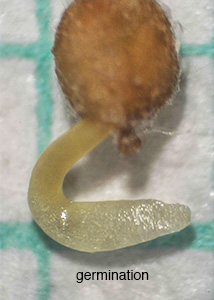
Comments: Smartweed dodder(Cuscuta polygonorum) is so named because of its frequent association with Persicaria (smartweed) species. The Persicaria species were formerly in the genus Polygonum which inspired the epithet polygonorum. The Cuscuta plants shown above were attached to Persicaria punctata (dotted smartweed) and Persicaria sagittata (arrowleaf tear-thumb) . In both cases the Persicaria plants were growing in standing water near the edge of a fen. Cuscuta polygonorum is not limited to Persicaria species as a host plant. We also found it on pokeweed plants (Phytolacca americana) growing near the same fen but not in standing water. Steyermark's Flora of MIssouri, Vol. 2, 1999 notes that members of the following genera have also served as hosts for C. polygonorum: Amaranthus, Bromus, Cephalanthus, Justicia, Lycopus, Penthorum, Saururus, Symphyotrichum, and Xanthium.
The unidentified juvenile insects, shown above, were all found in capsules from the same plant. The adult weevil looks like it could be a dodder gall weevil (Smicronyx sculpticollis) although other species have been found on dodder plants.
The seed collected from brown capsules presented a puzzle—they came in two sizes. Most were slightly over 1mm long and brown. A smaller number were about twice that size, a lighter color, and my impression was that they were at a younger stage in development. One of our readers commented that different seed sizes in a capsule can occur when some seeds are aborted due to insufficient pollination. Another suggestion was that they may dehydrate as they mature. Sorting this out will have to await further experiments.
The last photos show that seeds can imbibe so much water that the testa splits revealing the coiled embryo and endosperm within. For more on Cuscuta and seed anatomy, Check out the works of Mihai Costea.